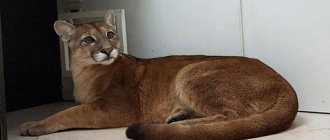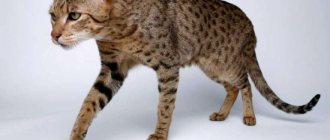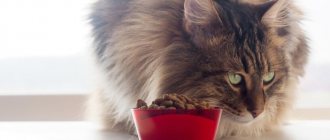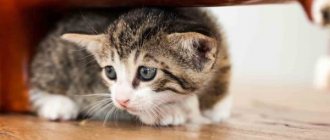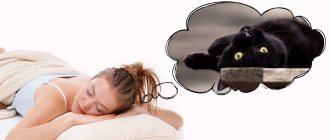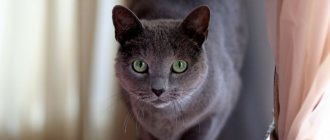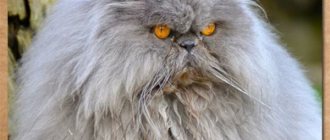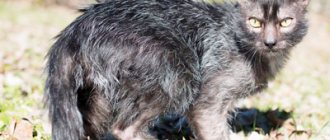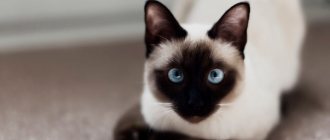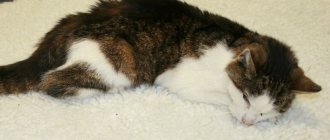Origin story
Traditionally, the origin of the amulet is associated with Japanese history.
However, there are several versions of the appearance of a cat bringing good luck:
1. The cat saved the priest
One rich man was traveling on business. It began to rain heavily, and he hid under a tree when he suddenly noticed a cat. He waved his paw and seemed to be calling for him. The man followed him and soon saw the temple . As soon as he stopped, lightning struck the . So the cat saved the gentleman , and he, in turn, made donations to the temple, which saved him from poverty. Then, on the orders of the surviving man, a figurine of a cat was made. She became a symbol of good luck, first for him, and then for everyone.
2. Courtesan's cat
The courtesan Usugumo adored cats, and there were always several four-legged friends next to her, but she adored only one cat, like her own child. One night the girl woke up and wanted to leave the room, but her pet grabbed her clothes and did not let her pass. The guard came running at the noise. He decided that the cat had gone mad and cut off its head. But before that, the animal managed to grab the snake . Usugumo realized that the cat had saved her , and she missed her pet so much that one of her visitors gave her a figurine in the shape of a cat.
3. The story of the cat from Imado
One old woman living in Imado found herself on the verge of poverty, and she had to sell her beloved cat to get money for food. But they quickly ran out, and the woman again found herself in difficulty. And then in a dream a cat came to her and told her to make a figurine similar to him and sell it. People liked them so much that things started to improve. The old woman was no longer in need, and her work began to be symbolized with good luck.
Maneki-neko: general information
Maneki-neko is a Japanese good luck charm in the form of a kitten with its paw raised.
The appearance of the talisman is associated with Chinese wisdom, which says: “If a cat washes itself, expect rain.” The weather, as suggested in this proverb, will lead to the appearance of guests in the shop, who will go there to dry off and warm up, and therefore the bargain will go better.
The literal meaning of cat behavior has become figurative, and now if the animal is washing itself, one should wait for buyers.
Homeland of the figurine
Such cat figurines originated in Japan during the Edo era, which lasted from the beginning of the 17th century. to the middle of the 19th century. The first written mention of them dates back to the 50s. XIX century, presumably at the same time the image appeared.
Cat mascots are also popular in the Middle Kingdom, which is why in Western countries they are associated with Chinese establishments, not Japanese establishments. That’s why some people mistakenly call maneki-neko “jinmao” (“golden cat”).
Maneki-neko: symbol and meaning
A cat with its paw raised is considered a symbol of good luck. And this is true, but you need to pay attention to which paw is on top, the color of the figurine and the symbols . This will influence the goals. If you make the right choice, then luck and success will await you in your chosen field.
Important! It is recommended to place maneki-neko in front of the entrance to the house or in the first room from the entrance, facing those entering.
Some sources talk about another meaning: when the authorities banned the use of a special symbol, courtesans began to use a cat with a raised paw - it symbolized them, luring them to themselves . One way or another, it comes down to the fact that the cat promises joy.
Japan or China is the birthplace of the figurine?
The money Japanese cat
Maneki-neko or Alluring Cat comes from Japan. Since the figurine was brought to China, it immediately fell into the category of talismans most revered by the Chinese. In this country, its name sounds like “Lucky Cat”, and the legend of its origin has several versions. The cat is a symbol with ancient history, which is bought to attract money or good luck, and is also given to relatives and friends with the best wishes.
People often endow a talisman with miraculous powers, and a Japanese cat, waving its paw welcomingly, can be seen not only in homes, but also in shops, cafes or offices for success in business and prosperity in all endeavors.
Don't miss an interesting article on Talisman about the money toad - a powerful talisman for attracting wealth.
Why is the cat's paw raised?
There are three explanations for this:
- the raised left paw symbolizes the unification of people, the desire for communication;
- a raised right paw means calling good luck and money into the house;
- Raised two paws attract both people and money.
Important! Pay attention to the height of the raised paw: the larger it is, the better it attracts positive energy and well-being.
A mascot is also used to attract customers.
Mosaicism
This kind of thing usually causes psychological problems in people: “Ahhh, what gender am I?!” But cats don’t have any problems. Well, yes, chromosomally hermaphrodite, so what? True, almost all of them are infertile, but somehow the cat has no need to think about it.
But a person with chromosomal mosaicism will usually be very happy when he meets a calico cat: “Hurray, we are of the same blood!” There are quite a few of them - both people and cats... Namely cats, because “Y” is already a definition of the male gender, even though there are more “X’s” than necessary.
Types of mascot
A white cat raising one paw brings intellectual development, helps maintain mental balance and a positive attitude.
A royal cat holding a gavel and wearing a scarf is suitable for executives. The items symbolize good luck and prosperity.
The warlike Maneki-neko , dressed in a kimono and with kittens around, protects the owner from harm and disease. The more kittens, the stronger the symbol itself.
The black figurine protects against the evil eye, damage and evil spirits and calls upon good forces.
The red figurine wards off illness and negativity, attracts positive energy, and helps restore strength.
Blue - identified with chastity and morality, but has a beneficial effect on spiritual development and helps to cope with internal emotions.
A pink cat relieves loneliness, makes its owner more attractive and confident, and relieves melancholy. Increases attraction and attraction. Helps you find new relationships or strengthen old ones.
Green – has a positive effect on memory, concentration, and increases creativity. Suitable for students and creative people.
Money Maneki-neko , which holds a coin or a bag, helps to maintain and increase financial status. A cat with two raised paws protects the house . If mice sit on his lap, this means fertility.
If both paws of a cat are raised , this is a talisman for preserving the hearth and family happiness. If a cat with kittens is a symbol of fertility.
The objects the cat is holding have different messages:
- the fan drives away evil spirits;
- a children's toy makes wishes come true;
- a gold coin or fish - for money;
- a flowering twig attracts love;
- fruits lead to the birth of a baby;
- oar - success in any endeavor.
Cat breeds with large, round, surprised eyes
Cats with different eyes - examples of what breeds are called
The shape and size of the eyes depends on what breed the animal belongs to. Some cats have such an unusual and beautiful look that it is simply mesmerizing.
Balinese cat
Representatives of this breed are very graceful, resilient and strong. Balinese have a fairly elongated body, paws, neck and tail. The tail is thin and pointed at the end. It is completely hidden by the animal's long hair.
The eyes of this breed are located slightly slanted, similar to the almond-shaped eyes of oriental beauties. Balinese cats do not have squints, bulges, or pale irises.
Balinese cat
Ukrainian Levkoy and other hairless cats
Hairless lefties have a flat, slightly elongated body. When viewed from above, it resembles a pentagon. These cats are unusual and attractive due to their prominent forehead.
Note! The eyes of these animals are slightly slanted, usually green or blue.
Ukrainian Levkoy
Devon Rex
These cats are not like other representatives due to their unique appearance. They are distinguished by huge ears and large eyes on a heart-shaped muzzle, a wide chest and long legs with an overall compact and light build. The unusual appearance, distinguishable even from afar, is complemented by short wavy hair, very fine and pleasant to the touch, which does not cause allergies.
Devon Rex
Japanese Bobtail
A goggle-eyed cat, like a cat of this breed, is distinguished by a lean, athletic and slightly elongated body with well-developed, but not massive, muscles. They are gracefully built, elegant and very harmonious, without unnecessary lightness, but not stocky either. The animals' heads are small, triangular in shape with curved smooth contours, giving the impression of being sculpted and sculpted. The breed has a soft rounded chin, high cheekbones, and well-defined whisker pads.
Bobtails have large, expressive oval eyes, set wide and slightly at an angle, which is especially noticeable in profile. They can be any color, but are usually golden yellow.
Note! Representatives of this breed are highly valued not only in Japan, but throughout the world. They are born with white fur with red or black spots.
Japanese Bobtail
Scottish Fold (Scottish Fold)
A cat with big eyes or a cat from this breed has a muzzle decorated with folded ears, giving the animal a sad and naive expression. This is a very friendly and affectionate breed, among other things, it is distinguished by its extraordinary intelligence.
Scottish lop-eared
Persian cat
The Persian big-eyed cat stands out among the breeds with its flattened muzzle. It seems that his face was specially flattened. Large eyes are round in shape. The standard allows for iris shades of blue, multi-colored orange.
In addition, cats with huge eyes have long, fluffy, soft fur that requires constant care. Representatives of the breed have a calm character. They are friendly and not aggressive. The Persians have a phlegmatic temperament.
Persian cat
Abyssinian cat
The big-eyed Abyssinian cat has a flexible and strong body with well-developed muscles. The animal's neck is extended. The paws are high and slender, which gives the breed gracefulness. The tail of this breed is long with a thickening at the base, tapering towards the edge.
The head is slightly elongated, with soft contours. The ears are large, set wide apart in different directions from each other. They always stand upright, wide at the base, rounded at the tips.
The animal has an attentive and intelligent look. The eyes of the breed are shiny, large, distant from each other, and predominantly green in color. This is a breed with short, but thick and fine hair that lies tightly to the body. It has a very beautiful and unusual color, evenly distributed throughout the body without additional patterns.
Note! Each hair of the coat has dark and light zones - ticking.
Abyssinian cat
Turkish Angora
This is a very elegant medium-sized breed with a flexible, elongated body, quite muscular and graceful. Cats are quite small in weight compared to cats. They reach no more than 3.5 kg, and big-eyed cats weigh 2 times more. The eyes of representatives of this breed are large, widely set, round, slightly slanted in shape. Most often they are blue, green or yellow, but there are also different colors.
Turkish Angora
Scottish Straight
Scottish Straights have a rounded head with a convex skull. Also a rounded muzzle and voluminous cheeks. The nose of animals is short, slightly arched at the transition to the forehead. The chin is round and strong. This is a breed with luxurious mustaches located on convex pads. The short neck is less powerful than that of the “British”.
Representatives of this breed have large, wide open eyes. They are most often blue or amber in color. The ears are widely spaced, medium-sized, with slightly pointed tips.
Scottish Straight
The meaning of the talisman color
Most often, Maneki-neko is made in three-color colors . Usually these are white, black and red - symbols of good luck. Red-gold and white increase finances . There are also two-color cats. They themselves are white with spots of certain colors.
They have different meanings:
- white – kindness and innocence;
- black – protection from ill-wishers;
- gold – wealth, attracting profit;
- red – protection from harm;
- pink – love;
- red – good luck;
- green – new knowledge;
- blue – wisdom and peace.
Japanese Bobtail
This rare breed with a short tail is considered a symbol of happiness in many cultures. Bobtails are intelligent, friendly and playful creatures. They can be extremely cautious with strangers, but they will always find a common language with their family members and will give them their love and care. For the Japanese, the bobtail has always been a symbol of happiness. The Japanese believe in the power of black and red animals. They are the ones who can bring prosperity and success to their owner.
It was previously reported which breeds of cats are considered the most loyal to their owners.
Where to put the talisman?
Usually the cat is placed outside at the front door. If you live in an apartment, then in the hallway, so that you look at the door . To enhance the actions of the talisman, place it on a red cloth or pad.
Maneki-neko is a traditional Japanese figurine symbolizing good luck. Depending on the color of the cat and the attributes next to it, it changes its meaning and attracts into the house exactly what the person needs . It is important to make the right choice based on what you want so that luck really attracts you to the right side of life.
Subscribe to our Social networks
Tips and tricks for making your own maneki-neko
It’s not at all difficult to make such a cat with your own hands. Traditional figurines are made of clay, but at home you can make them from other popular materials:
- salt dough;
- papier mache;
- polymer clay.
Maneki-neko can be made from polymer clay.
You can also buy a wooden blank and paint it using the technique that the artist likes.
Some people put a note inside the figurine wishing them good luck. Although this solution is unconventional, it will help diversify the process and put soul into the product.
Breed card
| Characteristics of a cat | Notes | |
| General information | The breed is not widespread outside Japan, but is least common in Europe. | An ancient breed of cats |
| Character | Calm, friendly disposition. A playful and active cat that gets along well in families with children | “Talkative” cats. They are highly trainable and can learn to fetch small objects. |
| Appearance | Characteristic shortened tail, straight curve of the back. Color: bicolor and calico; the most valuable color is “mi-ki” (tortoiseshell-white cats). | |
